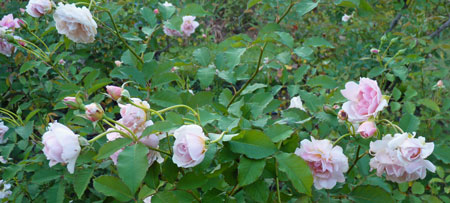 |
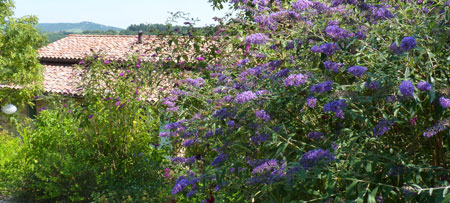 |
|||
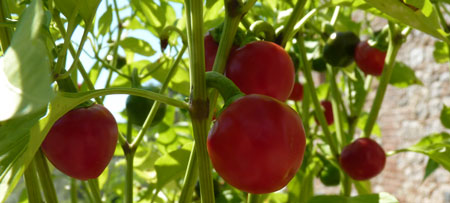 |
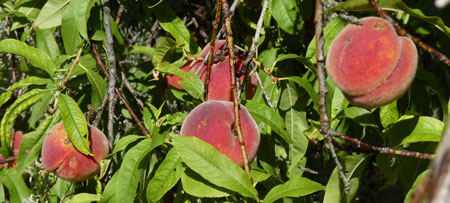 |
|||
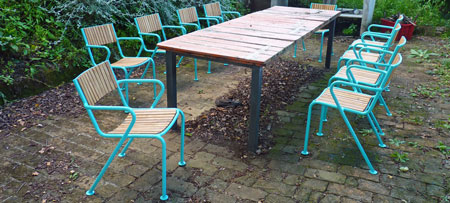 |
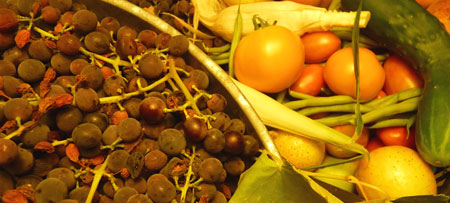 |
|||
CdP
6 September 2015
The odd thing about the tail end of this longest hottest summer on record is that it looks like spring. We’ve had just enough pounding downpours – here, thankfully, without a side dish of hail – to keep roots unseasonably happy. My unirrigated so-called lawn – generally a sad dust bowl at this point – is juicy green; the perovskia is still superb; the Rosa Felicia has suddenly burst out into bloom as if it thinks it’s May, not September.
The fruit is in that grey area between bonanza and headache.
We’ve eaten huge quantities of sweet, snappy gala apples from the big tree, but the birds and bees are now working hard at what’s left. The cookers on the renetta (Canada pippin) and the limoncella (if that’s what it really is: it was sold to me as such but in fact bears little resemblance to that ancient variety) are less successful and more insect-ridden which if nothing else gives me an excuse to do nothing with them.
I couldn’t think what to do with all the wonderful aromatic uva fragola grape (Vitis labrusca – a north American native, I have just learned, and possibly responsible for bringing the phylloxera bug to Europe… and there was, I convinced that it was a muscat). I was given huge amounts by friends last year and proceeded to
make
a jelly, most of which is still sitting on the larder shelves. I have turned some of this year’s crop into sorbet but how much sorbet can we eat now that the
flood of summer guests has receded? Some I picked and put through the centrifuge and drank: very labour intensive, if only because my old centrifuge is a complicated beast to wash up. Mind you, the solution I went for in the end wasn’t much better***.
Now we have cloudy and just slightly lumpy grape juice to consume whenever.
The peaches are growing. And growing. And growing. They’re huge but still hard, and though I keep thinning them out to help the poor old trees, they are pulling branches so far down that I shudder each time I pass, terrified that another of the long spreading branches might have cracked off under the weight. These too will go into jars, bottled according to my making-life-as-easy-as-possible method (works just as well for peaches as apricots). But they still need to be peeled and sliced: the preparation is endless and infinitely dull, and with summer still playing out outside, it’s difficult to make it seem worthwhile by summoning up that joyous feeling of breaking open a jar and smelling warm sunshine when winter’s got a grip on everything else.
What I still don’t have, most peculiarly, is passata. This is becoming worrying now: what am I going to do if my recalcitrant tomatoes really don’t do what they should? There’s quite a bit of fruit on the plants but it’s mostly green. And it has been that way all summer: by now I should have 30-odd half-litre jars sitting in the larder to keep us supplied all through the winter. To date I have… one. (There were two, but one precious jar I gave to C.) Only one time through the whole summer did the number of tomatoes that ripened outnumber the (modest) number of tomatoes we needed for salads. This is just plain weird. And rather worrying because I refuse to buy the tasteless things you find in the shops. We will end up having a very tomato-less winter.
As the weeds grow and the produce piles up, what have I been doing? Restoring chairs. The comfortable old chairs that L bought so long ago from a junk shop – their metal frames painted chipping dark red and dark green and some still with little slips of paper bearing the seat numbers of the old outdoor theatre or cinema to which they belonged glued to the back – reached the end of their useful life in that form some time ago. This was partly due to neglect, and leaving them out in the elements year round. But it was partly due to age too: many of the wooden slats were bits of any old wood, of any size and thickness, screwed in place over the years in a very approximative fashion when one of the original pieces gave out.
So they have now taken on a new lease of life in a painstaking and painfully slow process which was left (as often happens) to me. There are ten chairs; each has 11 wooden slats on the backrest and 11 wooden slats on the seat; on these latter, the end two had to be individually shaped because the metal frames all curve at different angles. Each slat had to have its splintery edges sanded off and be given a coat of sealant (these new ones are beautiful hard oak, and it would be a crime to colour them). It was fiddly and long-winded and quite frankly the whole thing bored me to tears.
The end result, though, is worth it. We opted for a startling acqua-blue-green of fairground intensity. Each time I look over towards the barbeque area where they’re sitting and catch a glimpse of the freshly painted frames, it makes my heart sing.
Next up, the table. And then of course a smart re-landscaping of the whole barbeque area which this summer we have used… not a single time.
*** First I put the grapes in one large saucepan and added sufficient water to almost cover them. Then I poured off that water into another large saucepan and brought it to the boil. At that point, I plunged the grapes into the water, brought it all back to the boil, then turned off the heat and went at it with a stick blender. I was too lazy to strain this through my jelly bag, which would of course have given me a lovely clear juice. I couldn’t even be bothered to locate a piece of muslin. I simply strained it through a fine sieve into sterilised bottles, screwed the lids on tight, placed them in a big pot and boiled it for sufficiently long to pasteurise the lot. For clearer instructions about this process, see here.